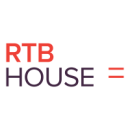Burnout is a natural and all too common result of a stilted work-life balance. While more recently, burnout has been discussed within the context of the pandemic, it existed before and has only been exacerbated since.
In a recent Deloitte survey, 77 percent of respondents said they had experienced burnout at their current workplace. Meanwhile, 70 percent said their employers were not doing enough to alleviate or prevent burnout.
When work becomes a dominant force in someone’s life, eclipsing moments to unwind, recharge and disconnect, everyone is worse off. In the same Deloitte survey, 91 percent of respondents stated that unmanageable stress impacts the quality of their work.
As burnout remains a negative and pervasive force in many workplaces, leaders have been tasked with modeling boundary-setting, staying attune to how employees feel, and reinforcing the importance of maintaining a healthy work-life balance.
Built In NYC touched base with leaders from three local companies to hear how they empower team members to balance their work and personal lives, address burnout and what resources their companies offer employees.
Adtech company RTB House provides state-of-the-art marketing technology to brands through the world’s first ad-buying engine that uses Deep Learning algorithms to help advertisers reach their short-, mid- and long-term goals.
What examples do you set as a leader to ensure employees feel empowered to create and uphold healthy work-life boundaries?
As a leader of a team and a mother of two boys, work-life balance is very important to me. I have personally struggled with burnout in the past, and that drives me as a leader to ensure my team enjoys healthy work-life boundaries. For me, this starts with communication. I make sure to discuss the current workload in team and individual meetings and identify if there are clients and team members who may need additional support. I make it a point to let my team know I am here to support them and that working long hours is not in the best interest of our team or partners.
I do my best to lead by example and not work, email or Slack outside of normal working hours. I feel we all should have time to disconnect and focus on the things that bring us joy outside of work. Throughout my time as a director at RTB House, I have proactively advocated for my team with other departments and made it clear that professional working boundaries need to be respected, in the best interest of everyone. I think the best thing I can do as a leader of a large team is proactively working to provide my team with the support they need to prevent burnout.
Say an employee came to you and said they were feeling burnt out or overworked. How do you address the situation? What’s the most important step you take to help that employee find balance?
My overall goal with my team members is transparency and openness. As a team leader, I make it a point to check in on workload and remind my team to take breaks and their vacation time. Additionally, I try to emphasize that their happiness is important and that they can always speak to me if their personal well-being is being impacted. I think that’s the first step in getting ahead of burnout and trying to identify the signs of it before it becomes a larger issue. I work with a lot of hardworking people who are dedicated and care about their jobs. Unfortunately, burnout can come along with that if it’s not properly identified, communicated, or addressed.
If I do have a team member come to me with issues related to burnout, I focus on letting them know that their personal well-being takes precedence over their professional responsibilities and that we’ll do whatever we need to improve their work-life balance. Reviewing their workload, identifying the pain points and coming up with a support plan is how I support my team members who are feeling overwhelmed.
Reviewing their workload, identifying the pain points and coming up with a support plan is how I support my team members who are feeling overwhelmed.”
What are some specific perks or benefits your company offers that support a healthy work-life balance and mental and physical well-being?
One of the best things about working at RTB House is the flexible working environment. My team is 100 percent remote and can work from wherever and whenever, so long as their responsibilities are being completed at the very highest level. Our philosophy is to hire the best talent who we can trust and empower to succeed without micromanaging how they work. We also have comprehensive health insurance that covers mental health services. Not having to worry about the cost of mental health services ensures everyone at RTB House can get the help they need when and if they need it.
Working 100 percent remotely comes with challenges and can be isolating for certain personality types. To ensure our team stays connected, we organize both in-person and virtual social gatherings to foster a sense of community among our remote workers. We also provide a generous remote work equipment stipend to create an office space that suits each individual.
Lastly, we believe that the little things can make a big difference, which is why we periodically send out small gifts like snack boxes and holiday and anniversary gifts to show appreciation to our team.
Marketing tech company AB Tasty helps companies optimize customer experiences through features like experimentation, personalization and product optimization to transform the buyer journey.
What examples do you set as a leader to ensure employees feel empowered to create and uphold healthy work-life boundaries?
I like to lead by example here and am constantly preaching about taking breaks between big tasks, lunch blocks and turning off Slack at the end of the day. An SDR’s calendar is constantly changing, but we need to make sure that we have breaks built in that we don’t book over. Burnout is incredibly easy if you don’t manage your work-life balance.
I like to lead by example here and am constantly preaching about taking breaks between big tasks, lunch blocks, and turning off slack at the end of the day.”
Say an employee came to you and said they were feeling burnt out or overworked. How do you address the situation? What’s the most important step you take to help that employee find balance?
The majority of the staff I manage are new to the workforce. So, managing their day-to-day and work calendars can be a new concept for them. First, we would get the employee some time off to get back into the right mind space. Then, we would evaluate their workload and where we can find the gaps in their time management or, if needed, a reduction in workload.
What are some specific perks or benefits your company offers that support a healthy work-life balance and mental and physical well-being?
We provide access to a work-life balance platform and mental health days. We also provide a day of reflection after your first year - a “retreat day” where you get a day off to spend time in nature and reflect on your past year, and look forward.
Last year we implemented one of my favorite things — Summer Fridays! From the beginning of June through Labor Day, employees get every other Friday off. It was a great way to keep everyone fresh in the summer when you are constantly seeing people go on vacations.

The Org aims to make organizations more transparent via its network of public org charts.
What examples do you set as a leader to ensure employees feel empowered to create and uphold healthy work-life boundaries?
My style is to lead by example, everything from small behaviors such as using my Slack status to indicate vacation plans. I found that communicating these details was a good way to openly show my intention of prioritizing my life outside of work. I’m conscious about sending emails or work-related messages outside of regular work hours. For example, I’ll schedule my messages to be sent during a specific time to avoid interrupting recipients during non-work hours. I will also make an effort to respond to messages during work hours, and I frequently schedule a reminder on Slack to prompt me to get back to a thread or conversation at a different time.
I encourage the team to speak up and share their concerns, ideas and feedback by prompting questions like “How are you feeling?” during one-on-ones. If a team member shares their needs and concerns about maintaining a healthy work-life balance, I will make sure to acknowledge their input and make it clear that I support their efforts to achieve this balance. Lastly, it is also important to provide clearly defined expectations around work hours, workload, and deadlines to ensure that employees can manage their time effectively.
Say an employee came to you and said they felt burnt out or overworked. How do you address the situation? What’s the most important step you take to help that employee find balance?
The first step I take is to listen; I hear them out on their concerns and ask them questions to understand what might be causing their feelings of burnout or feeling overworked. This can be helpful in understanding the root cause of the issue and identifying any immediate actions that can be taken.
I’ll then review the employee’s workload to see if any adjustments can be made to reduce their workload, such as re-prioritizing tasks, delegating responsibilities, or providing additional support or resources.
The first step I take is to listen; I hear them out on their concerns and ask them questions to understand what might be causing their feelings of burnout or feeling overwork.”
Then I’ll brainstorm with them to identify ways to balance their work demands with their personal life, such as scheduling time off, exploring alternative work arrangements, incorporating regular breaks in the day-to-day schedule, setting boundaries around work hours or engaging in stress-reducing activities. We can work together to develop a plan that addresses the root cause of their burnout.. This plan should include clear goals, actions and timelines for reducing their workload, managing their stress and improving their work-life balance. Lastly, I’ll follow up with regular check-ins and offer any additional support or resources as needed.
What are some specific perks or benefits your company offers that support a healthy work-life balance and mental and physical well-being?
We offer generous time off to encourage employees to take enough rest to disconnect and recharge. We also offer unlimited time off in the United States, which at some companies can create confusion about how much time is appropriate or result in people not taking much time off at all.
Additionally, we prioritize mental health support by offering a free Headspace subscription to all employees — ensuring that everyone has access to meditation and mindfulness resources. Our office also has a dedicated meditation room, which is great for people to grab a quick nap or take a mindfulness break in the middle of the day if they’d like to.
We also issue a yearly stipend for employees to spend on fitness and well-being. Employees have the flexibility to spend the stipend in a way that best fits each individual’s interests and needs. Allocating funds and resources to organize community building and social events to ensure team members have the time and opportunity to disconnect from work and connect with each other is another benefit we offer. We are also intentional about these events to ensure they do not solely revolve around eating and drinking, such as a planting session on Earth Day, candle-making, fitness classes and so on.











